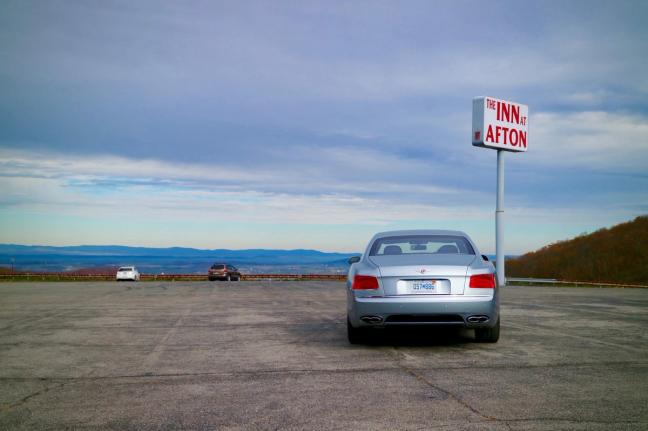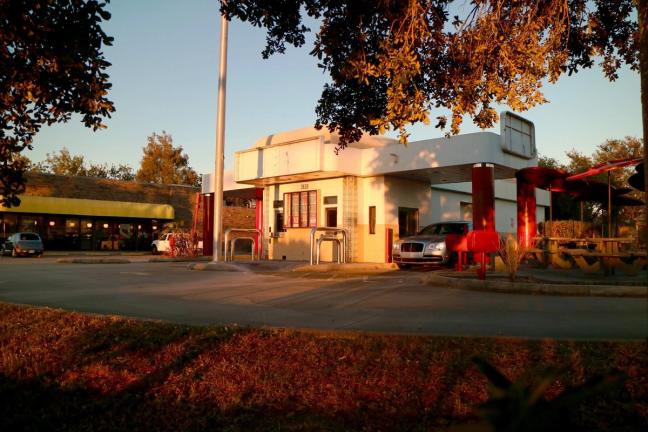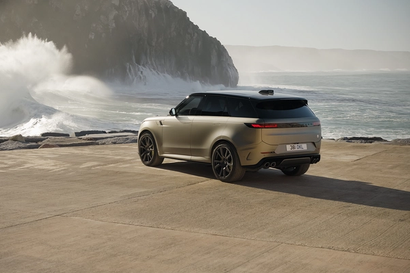It would have been the perfect bucket list moment. I’m sitting behind the wheel of a box-fresh Bentley Flying Spur with only 500 miles on the clock and Uncle Sam’s back garden in front of me. Attempting to take it all in, as I sit ensconced in Nappa leather, watching the sunset over Washington DC. “S’cuse me, sir. SIR?” yelled a voice, accompanied by a rattle on the window. Snapping out of my comfort-enduced coma, I’m greeted by a not-so-friendly guard, his P90 submachine gun and his even less friendly canine companion. Welcome, one and all, to the US of A.
Like a character from a low budget cop drama, by default, I drop in the clichéd, “what’s the problem, officer?” – well, it seemed like the perfect opportunity. “You need to move your ve’hicle, immediately, sir – you can not park here – this is the Whitehouse.” Judging by the inclination in his voice and my abstract look of confusion, it would appear this is a first for the both of us. After all, how many enemies of the state accidentally breeze into President Trump’s personal car park in a $200,000 Bentley? Nonetheless, the apoplectic Alsatian by his side is enough for me to make a hasty u-turn and get on with the journey. As much as I’d like to pretend I was going all Huckleberry Finn on this trip, the car and I do, in fact, have to make our way to the Deep South, so we’d better make tracks.
Out on the road, with Washington’s landmarks fading in the mirrors, I set about the three-hour drive to my first stop in Charlottesville, Virginia. Outside this small unassuming town lies Bailey’s Retreat, a Civil War-era cabin once home to the aptly named Confederate general Stonewall Jackson. Nestled in the foothills of the Shenandoah National Park’s fabled Blue Mountains, Bailey’s Retreat is a cosy and authentic out-of-town bolthole, with an open fire, sleeping loft and period details. Like a slice from the set of a Civil War epic, the cabin remains virtually unchanged since it was first inhabited.

Just a short drive away from the cabin is Monticello – the grand, mountain top estate and once home of Thomas Jefferson, one of America’s founding fathers. As the principal author of the Declaration of Independence, Jefferson successfully laid the foundations for an independent America and today, he’s still every bit the national and local treasure. “You know much about Thomas Jefferson?” asks Bill, former city slicker and now owner of Baliey’s Retreat. “Oh, he was a great man,” he adds wistfully, pausing for a moment and casting his gaze over to the distant hills. “Y’know, he was also my family lawyer back in the day,” he adds, taking a slurp of coffee. It’s the first time I’ve met Bill but – unlike us Brits – he’s not afraid to shout about his heritage, and rightfully so.
Leaving behind Charlottesville, I set off on the Blue Ridge Parkway on my way south. This 470-mile mountain top pass snakes from the Shenandoah National Park in Virginia to the Great Smokey Mountains National Park in North Carolina. Driving past fairytale farmsteads, split-rail fences, mountain meadows and acres of dense, golden forest, the skyline drive is the best way to take in the beauty of America’s vast national parks. As one of America’s lesser-known epic roads, it’s also an opportunity to make the most of the Bentley’s 500bhp 4.0-litre V8. Despite the two and a half tonne weight, lashings of leather and massage seats, it’s a cross-continental cruiser capable of unleashing nuclear levels of power when provoked – there are few cars better suited to a thousand mile road trip.

With the Parkway delivering me neatly across the border and into North Carolina, I leave the tree-lined avenues behind and hit the highway to the city of Charlotte.
“S’cuse me, sir,” came a gentle, southern accent over my shoulder at a rest stop. I turn around to be met with an elderly lady, stooped with a crooked back but transfixed by the car before her.
“Where’s that car ya’ drivin’ from?” she adds, scuttling forward for a closer inspection.

“It’s a Bentley – it’s from Britain” I replied.
“Ah, gee, I ain’t never seen one of those before – I bet it rides real good?” she says with a beaming smile, pressing her nose up against the rear window before continuing her questioning. It seems you’re guaranteed a reaction, even from the most unlikely characters, when driving a $200,000 Bentley through North Carolina’s backcountry.
The tall skyscrapers of Charlotte dominate the landscape from a distance, reflecting city’s wealth gained from its gold rush in 1800. The discovery made North Carolina the chief producer of gold until the Sierra Nevada find in 1848, after which Charlotte became a finance hub. Housing the headquarters of Bank of America, Wells Fargo and the North Carolina National Bank, Charlotte gained prominence in the 1970s and 1980s before succumbing to the power of Wall Street, reducing its status to America’s second largest banking centre. With its manicured suburbs and out-of-town mansions, the city is a shining example of America’s newfound wealth.
Just over a three-hour drive south-east of Charlotte, lies a town of once equal financial standing. Charleston is one of America’s oldest cities, founded by English colonists in 1670 and named in honour of King Charles II. By the mid-nineteenth century, Charleston was a thriving and exceedingly wealthy port town. Today, its colourful streets and charming antebellum architecture act as a tourist trap, while its quirky coffee houses and university draw in America’s bright young things. But behind the gloss lies a darker lineage – one of riches gained through trade and trafficking. From agriculture and cooking to buildings and art, the scars of slavery are constant reminders of Charleston’s dark past. Today, with its long beaches, rustic lowlands, sleepy backwaters and grand plantations, Charleston is the picture postcard of southern America. The slow pace, laid-back attitude and sultry climate give the city a quality akin to magic – it’s no wonder Americans have voted it one of the best places to live for several years running.
From the golden forests of the Shenandoah National Park, the glass towers of wealthy middle-class America and the sleepy, chic streets of Charleston, there are many stories to be told in America’s historic southeast. With Route 66 already discovered and driven to death, it’s time to head off the beaten track, get out the map and go to some of America’s lesser-known territories. Considering the cost of a litre of fuel in the US is measured in pence rather than pounds, covering ground is affordable – even if you are driving a V8 with a healthy appetite for super-unleaded. With that, it’s time to bid farewell to the beautiful vast open spaces, over ambitious portion sizes and, most significantly, my affable steed. I’ve reached the end of my journey.
Standing on Charleston’s deserted Folly Beach, I glance across the 4000 miles of ocean that lie between here and the familiar white cliffs of Blighty. Despite the distance, these two nations are tightly bound by a good, bad and sometimes ugly history. It’s an inseparable past that dates back to the arrival of settlers in the early 1500s, after which – well – let’s just say things escalated. Nonetheless, scratching the US road trip itch at least once is a must – wherever it may be – and navigating the backroads of the southeast states behind the wheel of a burly British continental cruiser certainly isn’t a bad place to start.

Become a Gentleman’s Journal Member?
Like the Gentleman’s Journal? Why not join the Clubhouse, a special kind of private club where members receive offers and experiences from hand-picked, premium brands. You will also receive invites to exclusive events, the quarterly print magazine delivered directly to your door and your own membership card.


